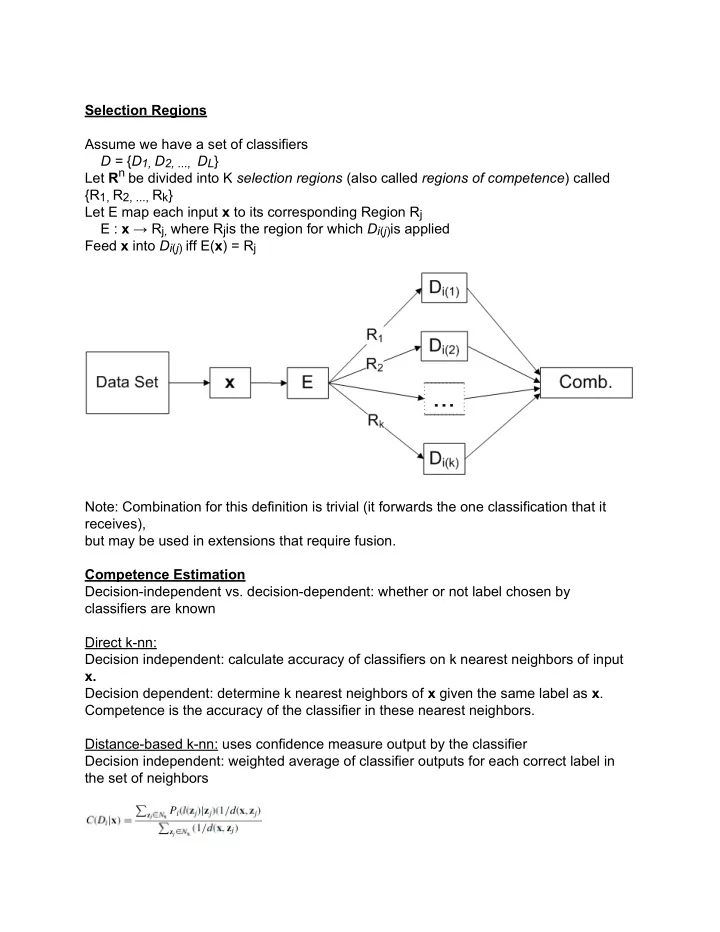

Selection Regions Assume we have a set of classifiers D = { D 1, D 2, ..., D L } Let R n be divided into K selection regions (also called regions of competence ) called {R 1, R 2, ..., R k } Let E map each input x to its corresponding Region R j E : x → R j , where R j is the region for which D i ( j ) is applied Feed x into D i ( j ) iff E( x ) = R j Note: Combination for this definition is trivial (it forwards the one classification that it receives), but may be used in extensions that require fusion. Competence Estimation Decision-independent vs. decision-dependent: whether or not label chosen by classifiers are known Direct k-nn: Decision independent: calculate accuracy of classifiers on k nearest neighbors of input x. Decision dependent: determine k nearest neighbors of x given the same label as x . Competence is the accuracy of the classifier in these nearest neighbors. Distance-based k-nn: uses confidence measure output by the classifier Decision independent: weighted average of classifier outputs for each correct label in the set of neighbors
Decision dependent: weighted average of classifier outputs for neighbors whose true class label is the same as that chosen for the input Potential functions: Points contribute positively to a classifier's potential if correctly recognized and negatively otherwise. This potential field is weighted by the distance from the point to the input element. , Pre-estimation of Competence Regions K = number of regions of competence L = number of classifiers Decide a classifier from D = {D 1 , ... D L } for each region R j , j = 1,...K. For input x , find its region of competence and choose most compete classifier for that region (D i(j) ) Selection or Fusion? Run paired t-test to determine statistical significance of classifier D i(j) . If difference in accuracies between best classifier and all other classifiers is significant, use classifier selection. Otherwise, use fusion. P D = Accuracy of classifier D i in region R j t = Statistic with parameters α (level of significance), degrees of freedom (d.o.f.) N = Sample size = 95% (1-.05) Confidence Interval, e.g. = threshold for statistical significance (for N>=30, α = 0.05)
Recommend
More recommend